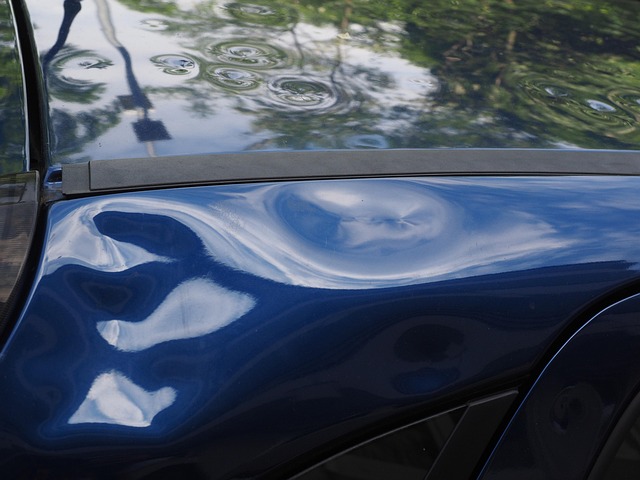Understanding car insurance policy types is key to choosing coverage that meets your needs. Primary categories include liability, collision, and comprehensive, each offering distinct protections. Factors like driving history, vehicle value, and budget determine the right policy. Comparing quotes across multiple insurers ensures the best value. Evaluating personal risk profile, including age, location, and vehicle type, is crucial. Add-ons and customization options allow for tailored coverage. Understanding the claims process and policy limits ensures adequate protection. Following these steps helps in selecting the best car insurance policy that balances comprehensive protection with budget-friendliness.
Selecting the ideal car insurance policy is a crucial step in ensuring financial protection behind the wheel. This comprehensive guide will navigate you through the process, from understanding key terms like liability and collision coverage, to evaluating your risk profile and comparing quotes. We’ll break down essential components, uncover customization options, and demystify the claims process. By following these steps, you’ll be equipped to choose the best car insurance policy tailored to your needs.
Understanding Different Types of Car Insurance Policies

When it comes to car insurance, understanding the different policy types is key to choosing the best fit for your needs. There are primarily three main categories: liability, collision, and comprehensive. Liability coverage protects against claims made by others if you’re at fault in an accident; it’s often required by law and considered a minimum essential protection. Collision insurance, on the other hand, covers damage to your vehicle when you collide with another object or vehicle, whether or not the other party is at fault. Comprehensive insurance provides broad protection for various losses beyond collision, such as theft, vandalism, animal-related incidents, and natural disasters.
To choose the best car insurance policy, consider factors like your driving history, the value of your vehicle, and your budget. If you have a clean driving record and drive an older, less valuable car, basic liability coverage might suffice. However, if you’re a new driver or own a high-end vehicle, comprehensive or full coverage that combines collision and comprehensive may offer better protection against potential financial burdens. Always compare quotes from multiple insurers to ensure you get the best value for your insurance dollar.
Key Components and Coverage Options to Look For

When navigating how to choose the best car insurance policy, it’s crucial to understand the key components and coverage options that underpin your protection. Firstly, liability coverage is essential, shielding you from financial responsibility in case of an accident causing damage to others’ property or injuries. Typically, this includes bodily injury liability and property damage liability. Secondly, comprehensive and collision coverage protect against a wide range of unforeseen events like theft, vandalism, natural disasters, or accidents not at your fault. Comprehensive covers most incidents except those explicitly excluded, while collision focuses on damages from collisions with other vehicles or objects.
Additionally, consider personal injury protection (PIP) which covers medical expenses for you and your passengers regardless of fault in an accident. Another valuable add-on is uninsured/underinsured motorist coverage, providing protection if you’re involved in an incident with a driver who lacks adequate insurance. Remember, the best policy balances these essential components and tailored options to fit your specific needs, ensuring comprehensive protection at a price that aligns with your budget.
Evaluating Your Personal Risk Profile and Needs

Evaluating your personal risk profile and needs is a crucial step in how to choose the best car insurance policy. Consider factors like your driving history, age, location, and type of vehicle. A clean driving record typically translates to lower premiums, as safe drivers pose less risk to insurers. Similarly, younger or older drivers may face higher costs due to their experience or demographic. Additionally, where you live can impact rates; urban areas with higher accident rates might command different rates than rural locales.
Your vehicle’s make, model, and age also play a significant role. Newer cars often come with advanced safety features that insurers reward with lower premiums. Conversely, older vehicles may be more expensive to insure due to potential repair costs or reduced safety standards. By assessing these variables, you can tailor your insurance choices to match your unique risk profile and budget, ensuring you get the most suitable car insurance policy.
Comparing Quotes from Multiple Insurers

When shopping for a car insurance policy, one of the most important steps is comparing quotes from multiple insurers. Start by gathering quotes from several reputable companies to get a comprehensive view of the market. Utilize online platforms and tools that allow you to easily input your vehicle information and driving history, generating side-by-side comparisons.
Remember that not all policies are created equal. Carefully review each quote, paying attention to coverage limits, deductibles, and what is and isn’t included in the policy. Consider factors beyond price, such as customer service reputation and claims handling efficiency. This strategic approach ensures you make an informed decision, ultimately helping you choose the best car insurance policy that aligns with your specific needs and budget.
Exploring Add-ons and Customization Options

When shopping for a car insurance policy, one key aspect often overlooked is the flexibility offered by add-ons and customization options. These features allow you to tailor your coverage to fit specific needs and preferences, ensuring that your insurance truly reflects how unique your driving experience is. Whether it’s enhancing liability protection, adding comprehensive or collision coverage, or incorporating specialized policies for high-value items like vintage cars, understanding these options is crucial in How to Choose the Best Car Insurance Policy.
Many insurers offer a range of add-ons that can be selected based on individual circumstances. For example, if you frequently drive in adverse weather conditions, adding weather-related coverage could prove invaluable. Similarly, for business owners or those who regularly use their vehicles for work purposes, commercial insurance packages are available to cover the unique risks associated with such activities. Exploring these customization options allows you to create a policy that not only meets legal requirements but also offers peace of mind, ensuring that unexpected events don’t leave you financially exposed.
Understanding the Claims Process and Policy Limits

Understanding the claims process is a crucial step in learning how to choose the best car insurance policy. When an accident occurs, your insurance company provides a structured framework for resolving the issue. This typically involves reporting the incident to your insurer, where they will assign an adjuster to assess the damage and determine liability. From there, negotiations may take place with the other party’s insurance provider to reach a settlement or coverage determination. Knowing your policy limits is equally vital. These limits represent the maximum amount your insurance company will pay out for covered damages, per incident. Understanding these boundaries ensures you have adequate protection and makes it easier to navigate the claims process effectively.
By comprehending both the claims procedures and policy limits, individuals can make more informed decisions when selecting a car insurance policy, ensuring they are adequately protected and prepared for potential accidents.
